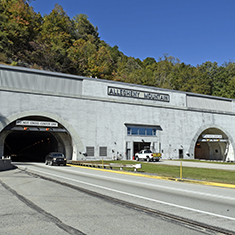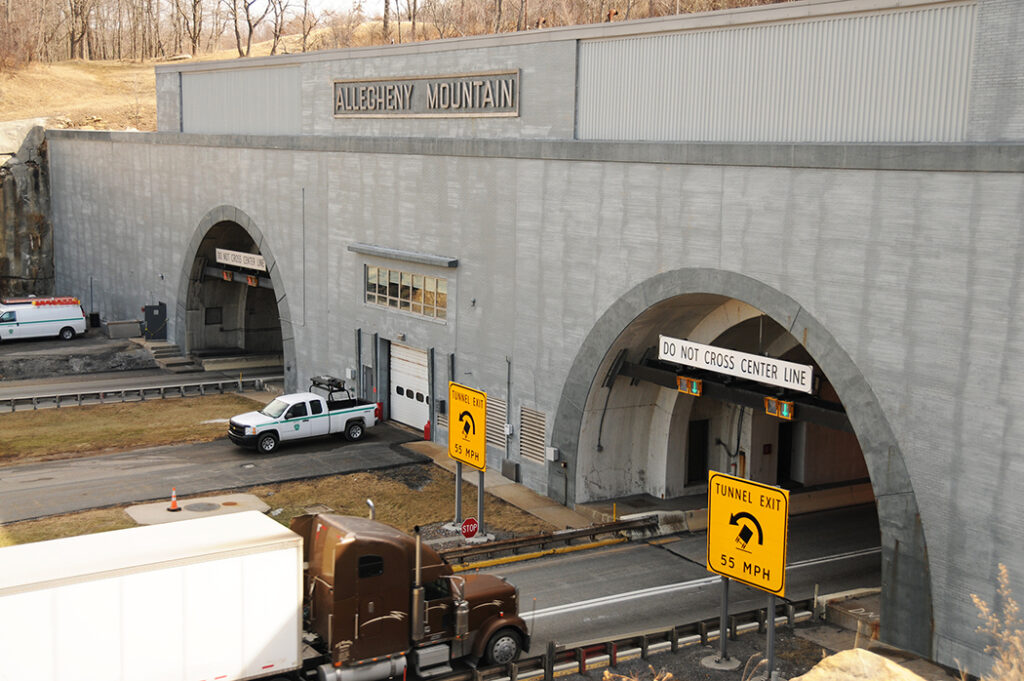
Bowman Consulting Group Ltd. (collectively with its subsidiaries, the “Company” or “Bowman”) (NASDAQ: BWMN) announced its selection by the Pennsylvania Turnpike Commission (“PTC”) to serve as prime consultant with respect to preliminary and final design for the projected $400-500 Million Allegheny Tunnel Transportation Improvement Project in Western Pennsylvania (the “Project”). As primary consultant, Bowman will lead all associated design services as well as manage a team of environmental, structural, geotechnical and survey firms experienced with sizable, multifaceted transportation projects. The direct assignment was awarded to Bowman’s wholly-owned McMahon subsidiary. While the exact amount of the award has not yet been determined and will depend on the ultimate scope of work, the Turnpike has initially authorized $16 Million to commence preliminary design with additional allocations to be determined as the project progresses.
The Allegheny Tunnel project will be one of the largest and most complex mainline projects in the history of the PA Turnpike. The Project principally involves bypassing the existing tunnel through the realignment and construction of approximately 3.8 miles of new PA Turnpike roadway around the south side of the existing tunnel. Additional components of the Project include construction of a large mainline bridge, several smaller mainline structures and culverts, a wildlife crossing bridge, retaining walls, along with the evaluation, stabilization and remediation of an ancient landslide area.
“The Pennsylvania Turnpike Commission has dedicated extensive resources to identifying the best solutions for the ongoing issues with the Allegheny Tunnel,” said Gary Graham, PE, Regional Chief Engineer at Bowman. “We are confident that our team of experts will deliver a project outcome that benefits local communities and addresses environmental concerns, while providing a safer route for all who travel through this important corridor.”
“The Allegheny Tunnel project is critical to reduce congestion and improve mobility in this mountainous corridor where we continue to see increasing traffic volumes, especially among commercial carriers,” said PTC Chief Engineer Brad Heigel. “A key objective is to improve traveler safety by reducing the frequency and severity of crashes. To address this, traffic will bypass the tunnels and travel on a wider, more modern roadway with gentler curves and slopes that meet today’s engineering-design criteria.”
Heigel explained that the structural condition of the 82-year-old tunnel continues to decline. “Though safe enough to accommodate traffic, the facility will require a costly rehabilitation in the coming years if it is to remain in service,” he said. “However, such a restoration would not address critical requirements including congestion and safety.”
By bypassing the tunnels, tractor trailers carrying hazardous materials would no longer be required to travel on local roads. “Federal regulations restrict certain hazardous materials from being transported through tunnels, so truckers are forced to leave our system and haul their freight through the regions’ towns and boroughs. Keeping these haulers on the PA Turnpike makes a much safer alternative than using local routes.”
“This selection extends Bowman’s recent string of significant transportation infrastructure assignments including project awards from the Pennsylvania Department of Transportation and the Illinois Tollway Authority,” said Gary Bowman, Chairman and CEO of Bowman. “We remain focused on increasing the concentration of transportation revenue in our business and this award demonstrates yet another achievement toward that commitment. It takes a team of talented and dedicated professionals to secure an award like this and I am proud to have such a group here at Bowman.”
The Allegheny Transportation Project was first initiated by the PTC in 1996. Since then, numerous alternatives for open-cut and new tunnel design were evaluated and the Gray cut alternative was recommended since it provided the best balance of operational, safety, cost and environmental considerations. With this award selection, the project moves into the preliminary design phase which will include further evaluation of the preferred alternative and recommendation of a final alignment configuration.




